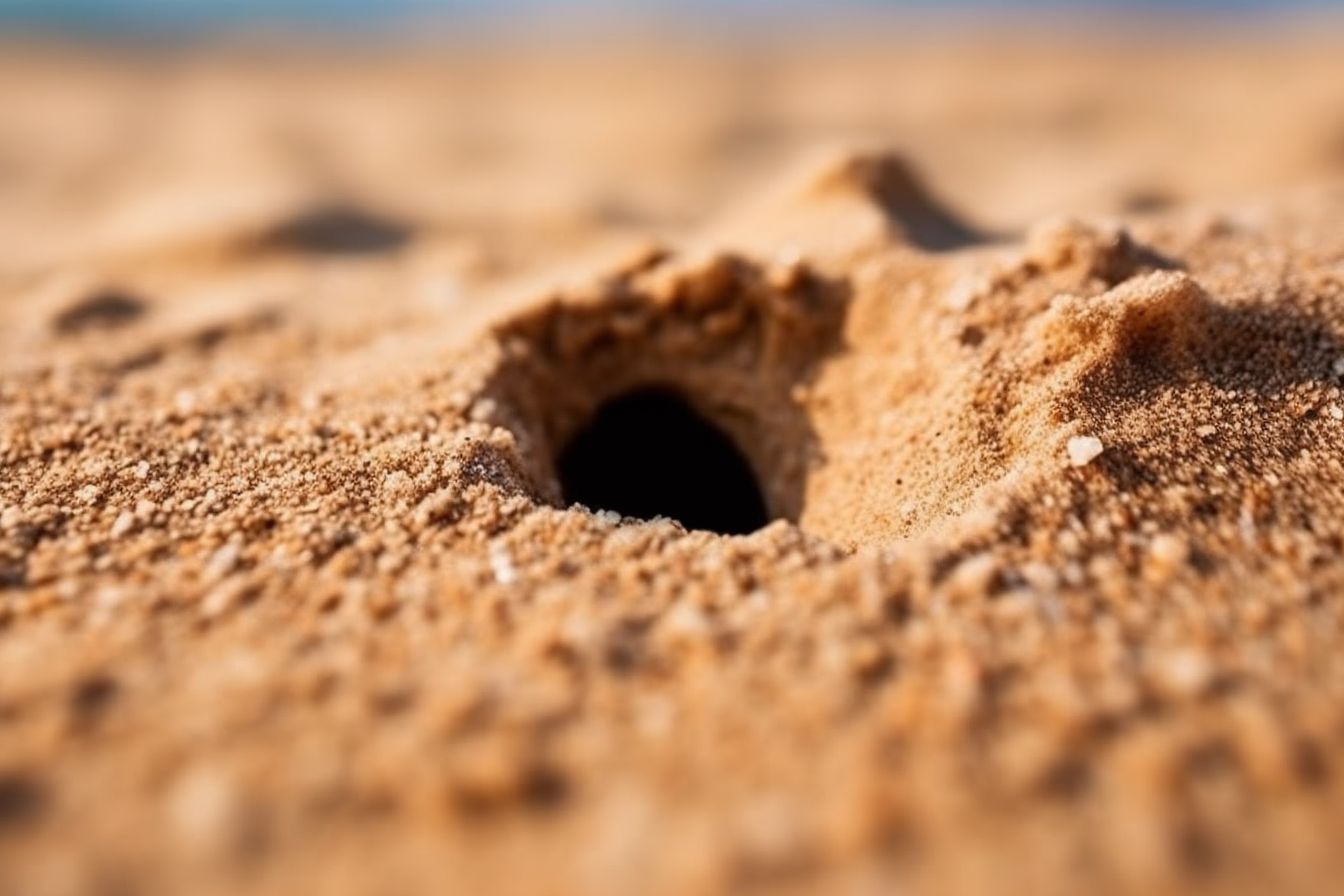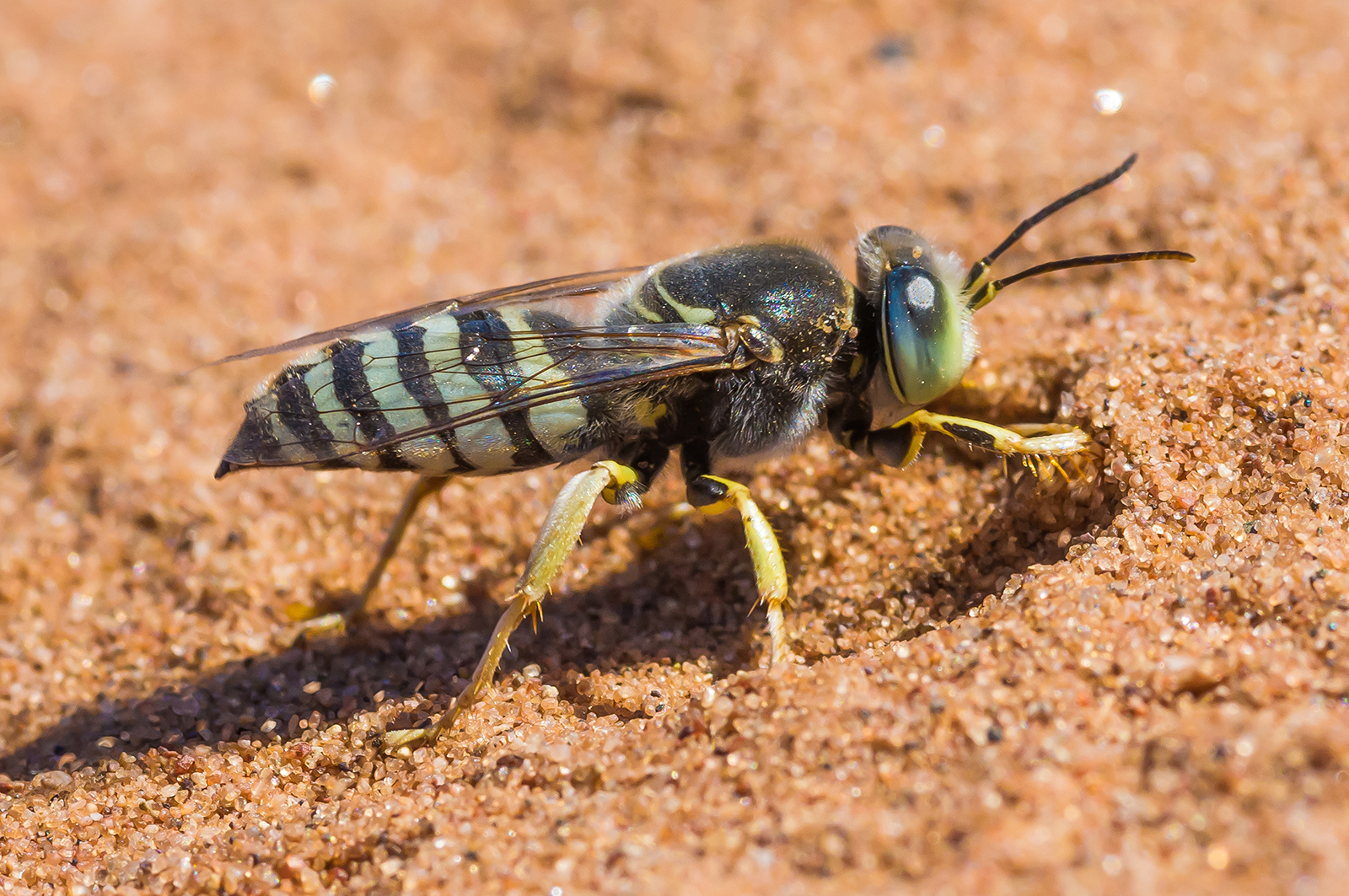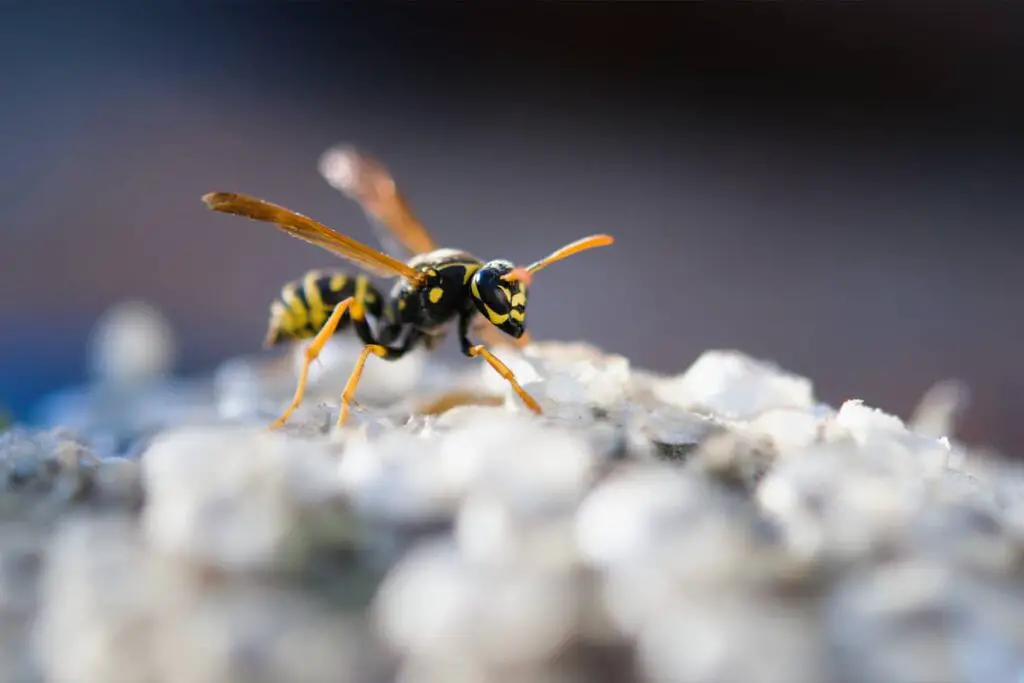
As someone who enjoys gardening and observing wildlife, I’ve noticed that sand wasps tend to dig holes in the ground. This naturally piqued my curiosity, and I started a little investigation. It turns out that these unique creatures have compelling reasons for their digging habits.
Sand wasps dig holes for the purpose of creating nests. These serve as chambers where the female wasp lays their eggs and provides food for their offspring. Each tunnel is provisioned with paralyzed insects or spiders to serve as a food source for the developing larvae.
The digging ability of sand wasps is nothing short of incredible. They can dig their way into the ground and out of sight in just a few seconds when the soil is workable. As it turns out, sand wasps are essential to the ecosystem and should be considered beneficial insects.
What Are Sand Wasps?
Sand wasps belong to the genus Ammophila, also known as Thread-Waisted Sand Wasps. These medium-sized wasps are known for their unique sand-nesting behavior. Like many solitary wasps, they dig nests with individual cells in which to oviposit their eggs.
A related genus called Bembix also demonstrates sand-nesting behavior. Commonly found in North America, these insects are known for their phenomenal digging abilities, sometimes disappearing into the ground in mere seconds when soil conditions are favorable. Sand wasps, as their name suggests, prefer sandy areas for their nesting sites. When several sand wasps nest in close proximity, it may give off the appearance of a communal nesting area, though they are not social or communal insects like paper wasps or yellow jackets.
In terms of size, sand wasps vary, but they are generally considered medium-sized insects. Their coloration and appearance can also differ depending on the species. The thread-waisted sand wasps, for example, are characterized by a narrow waist that connects the thorax and abdomen. Some species of sand wasps exhibit bright, striking colors, while others are more subdued in appearance.
One important characteristic of sand wasps is that they are largely docile and not aggressive. They do not sting or bite unless they feel threatened or their nests are in danger. Even in these situations, stinging is usually accidental.
In summary, sand wasps are fascinating, medium-sized insects known for their impressive sand-nesting behavior. They come in various sizes and colorations, and despite being solitary, they play an important ecological role in maintaining the balance of the environment.
Life Cycle and Reproduction
Nesting and Tunneling
Sand wasps spend a large portion of their lives searching for the perfect spot of sandy or loose soil to create their nest. Once found, they’ll dig individual nests in which to lay their eggs and provide a home for their offspring. Chipping away at the soil with their mandibles, the sand wasp will burrow into the ground to create an elongated tunnel that ends in a cell where they can lay their eggs.
While many sand wasps may make their nests in the same small, sandy area, they are not social or communal in the way that paper wasps and yellow jackets are. Although they may nest in a group, they do not share labor like true social insects.
One important exception to this is if the nests come under threat, in which case they may attack as a swarm, but this is not a common occurrence.

Eggs and Larvae
To get eggs for the next generation, the sand wasp first creates one or more chambers in the soil and lays one egg per cell. Meanwhile, they’ll also go hunting for insects like various types of flies. Once they capture and paralyze their prey, they bring them back to the underground nest as food for the larva.
The newly hatched wasp will then feed on the preprepared food in its chamber. After consuming this meal it will grow into the next stage of its life cycle.
Cocoon and Pre-Pupa
After a while, the wasp larva will form a cocoon inside the nest, which becomes its safe haven for pupation. The offspring undergo a transformation phase called “pre-pupa” while inside the cocoon. Eventually, the pupa develops into an adult sand wasp, ready to emerge and carry on the life cycle.
All in all the primary purpose of the sand wasp is to ensure the continuation of its species. Its life cycle and reproduction process includes intricate steps like digging nests and tunnels, laying eggs, and creating prepared meals for their future offspring.
Although they can deliver painful stings, they generally only attack humans if their nest is disturbed.
Feeding and Hunting
During summer when various insects abound, the sand wasp actively searches for prey. It mainly consumes nectar and pollen from flowers to meet its energy needs. However, its primary focus is to hunt live insects for their young.
In its hunting quest, it primarily preys on small insects such as flies, mosquitoes, caterpillars, bugs, grasshoppers, beetles, and crickets. As one might expect, larger wasps like the cicada killer will also hunt larger insects.
The sand wasp’s hunting strategy involves a combination of stalking and ambushing its prey. The wasp will position itself near areas with little vegetation and good visibility to maximize their chances of catching live insects. Once spotted, they quickly immobilize it with their stinger, which effectively paralyzes the insect and ultimately helps the sand wasp transport it back to the underground nest.
In terms of the nesting sites, they prefer habitats with loose or sandy soil (Field Station). The holes they dig in the ground serve as the perfect environment for their larvae to feed upon the live insects they’ve provisioned.
In conclusion, the primary goal of a sand wasp is to feed their larvae to ensure their survival. Their digging habits serve the purpose of creating a safe and secluded space for their young ones to consume the live insects they’ve hunted, ensuring successful growth and development.
Appearance and Identification
In my investigation of sand wasps, the first thing I noticed was their distinct appearance, which is essential for their identification. Sand wasps usually display black and yellow stripes or white and black stripes, often resembling a bee in their pattern. Some sand wasp species also feature pale greenish markings that add to their unique look.
The antennae of sand wasps are relatively short compared to some other wasp species. Moreover, the mandibles, or mouthparts, of sand wasps play a vital role in their behavior. Specifically, the sand wasps use their mandibles, alongside their front legs, to excavate nests in sandy soil. They chip away larger chunks of soil with their mandibles and displace smaller dirt particles with spines on their front legs, known as tarsal rakes.
Below is a quick summary of the main features I’ve observed in sand wasps:
- Colors: black and yellow, or white and black (sometimes with pale greenish markings)
- Stripes: banded pattern, similar to bees
- Antennae: relatively short
- Mandibles: used for digging nests alongside front legs with tarsal rakes
Their appearance is not only unique but also functional. The distinctive color patterns are thought to serve as a warning to potential predators about the wasp’s ability to sting. Additionally, their digging adaptations, such as their sturdy mandibles and tarsal rakes, aid them in their nest building process, which is crucial for reproduction.
Understanding the appearance and identification of sand wasps is crucial, especially because they can be easily confused with other insects, such as bees, due to their similar color patterns. Recognizing these fascinating insects enables us to better appreciate their behavior and ecological roles, as well as determine if they may pose threats to our gardens or property.
Interactions with Humans
Are Sand Wasps Dangerous to Humans?
Sand wasps are generally not dangerous to humans. They are solitary wasps found in habitats with loose or sandy soil and are more focused on nesting and hunting insects for their young than causing problems for people in their yard or garden. One species of sand wasp that might seem intimidating is the cicada killer wasp, but despite its large size, it poses little threat to humans.
Do Sand Wasps Sting?
In my experience, sand wasps can deliver painful stings, but they are not aggressive creatures like the European wasp. They usually only attack humans if their nest is disturbed. If you happen to be stung by a sand wasp, it’s typically not too severe, but the site of the sting may be painful, and you may need an ice pack to help relieve the discomfort.
Preventing Sand Wasp Infestations
If you’re concerned about sand wasps nesting near your home, here are some steps you can take:
- Inspect the yard regularly: Check for any signs of sand wasp activity in loose or sandy soil areas, and keep an eye out for small holes or tunnels that might indicate nesting.
- Maintain the lawn: Ensure that your lawn is well-maintained, without any overgrown patches or areas with bare, sandy ground. Sand wasps prefer nesting in loose soil, so taking care of the lawn can help discourage them from making a home in your yard.
- Monitor garden activities: While working in your garden, avoid disturbing the ground in areas where you suspect sand wasps may be nesting. This helps to minimize the chances of being stung and also allows them to perform their beneficial insect-hunting activities without interruption.
Just like many other insects, sand wasps play an important role in nature and pose little threat to us if given the respect they deserve.
Driven by a passion for those tiny creatures that rule our world, we at Bug Domain strive to be your go-to resource for information on insects.




